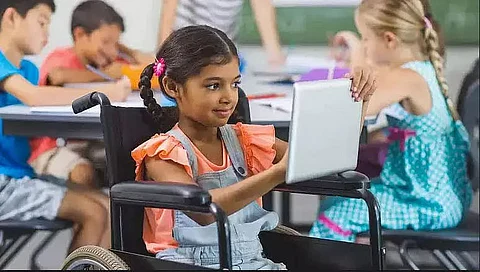
- Home
- Live Blog
- Breaking News
- Top Headlines
- Cities
- NE News
- Sentinel Media
- Sports
- Education
- Jobs

Rajashree Das
(The writer is from Gauhati University. She can be reached at ruchadas98@gmail.com)
The long-lost valuable time-space during the past one year and a half due to the dreadful pandemic has caused the reversal of a lot of significant progress in time. The educational sector is the most hit during this time as children were the most affected.
Hence, it is a time where the common public wants the government to make the school education system adopt solutions that are scalable, sustainable and effective so that all children get equal access to opportunities needed for leading a better life.
Now, if we look out at things in a more fragmented manner then you will find that lockdown and the drastic shift to online classes have somehow helped the children to cope up with damage, also which initially required immense blood and sweat to start and equip oneself with the technical knowledge of phone and tablets. However, the massive part to rethink and plan was for the underprivileged and marginalized sections. The digital divide which was somehow tried to cover up with technical device assistance provided by the government and many non-profit organizations wasn't enough to cover up the larger picture, which will even require many years to work upon.
But where is the start? It seems the strategic plan to cover the digital gap hasn't seen its beginning yet and only takes up an abrupt and short-term beginning when we see the sight of the disaster approaching, the prevention strategies are yet to be made concrete instead of doing it every time just after a disaster strikes.
The latest provision made in the NEW EDUCATION POLICY (NEP) 2020, is "a barrier-free access to education for all children with disabilities" approved by the Union Cabinet of India. This provision is made by the Social Justice and Empowerment Minister, Thawarchand Gehlot. The Education Policy in India was first formed in 1986 and was last modified in the year 1992.
According to Minister Gehlot, some of the major recommendations of the (NEP) on which new reforms will be based are made considering children with disabilities and those from socio-economic disadvantaged backgrounds. The major focus in executing this new rule will be primarily on two points.
• Imparting knowledge and know-how to teach faculties on how to teach children with specific disabilities.
• To provide barrier-free education to children with disabilities as per the RPWD Act 2016.
To facilitate this new addition made in the NEP, assistive devices, appropriate technology-based tools and language-appropriate teaching-learning materials will be made available. Also, high-quality modules to teach Indian Sign Language and to teach other basic subjects using Indian Sign Language will be developed for NIOS.
Considering that the children with benchmark disabilities shall have the choice of regular or special schooling as per the RPWD Act 2016, resource centres along with special teachers and trainers will be made available to cater to the various rehabilitation and educational needs of students with severe or multiple disabilities.
Under the NEP 2020, school and school premises would be helped by providing resources to include children with disability and appointing special teachers who are trained to teach such students.
Funds will be given to states, to make necessary addition and changes for female and transgender students (such as making toilets, cleanliness, bicycles and subjected cash transfers).
However, even it's good to see that the new provisions are made in NEP which will favour the students with disabilities but there's still uncertainty about the large-scale work which requires to be done, especially in courses of higher studies. Because we see that often various policies are being made, but only the policies that are implemented well benefit the society.
As it is disappointing to see that there are only 1,20,781 special educators registered at present with the Rehabilitation Council of India (RCI) also in the year 2011, around 7.62 per cent of India's total population with a disability was children, at approximately 2.04 million children out of 26.8 million of disabled people. Now, the big question remains that when is the number of special educators which is a vital resource will make a rise to meet the ratio of children to be provided with the required education. A large number of dropouts in the section of students of disabilities because of various reasons like inaccessibility, cultural and social discrimination, lack of required resources be it man-made and human resources, etc is another big concern to be looked upon. We yet remain hopeful that the policies of NEP will be executed soon and for the overall good of society.